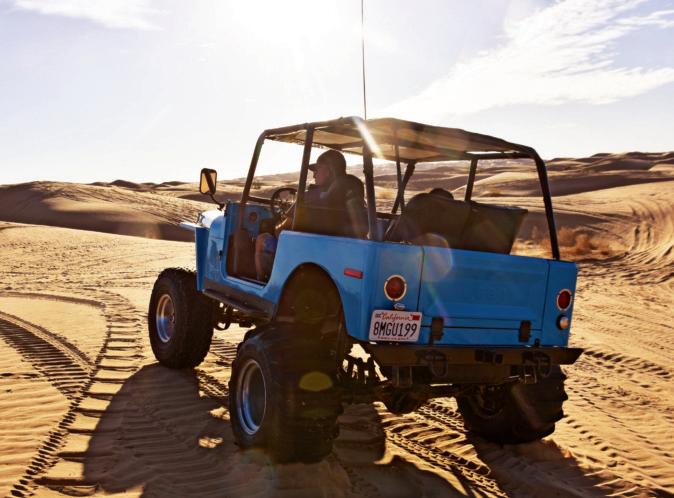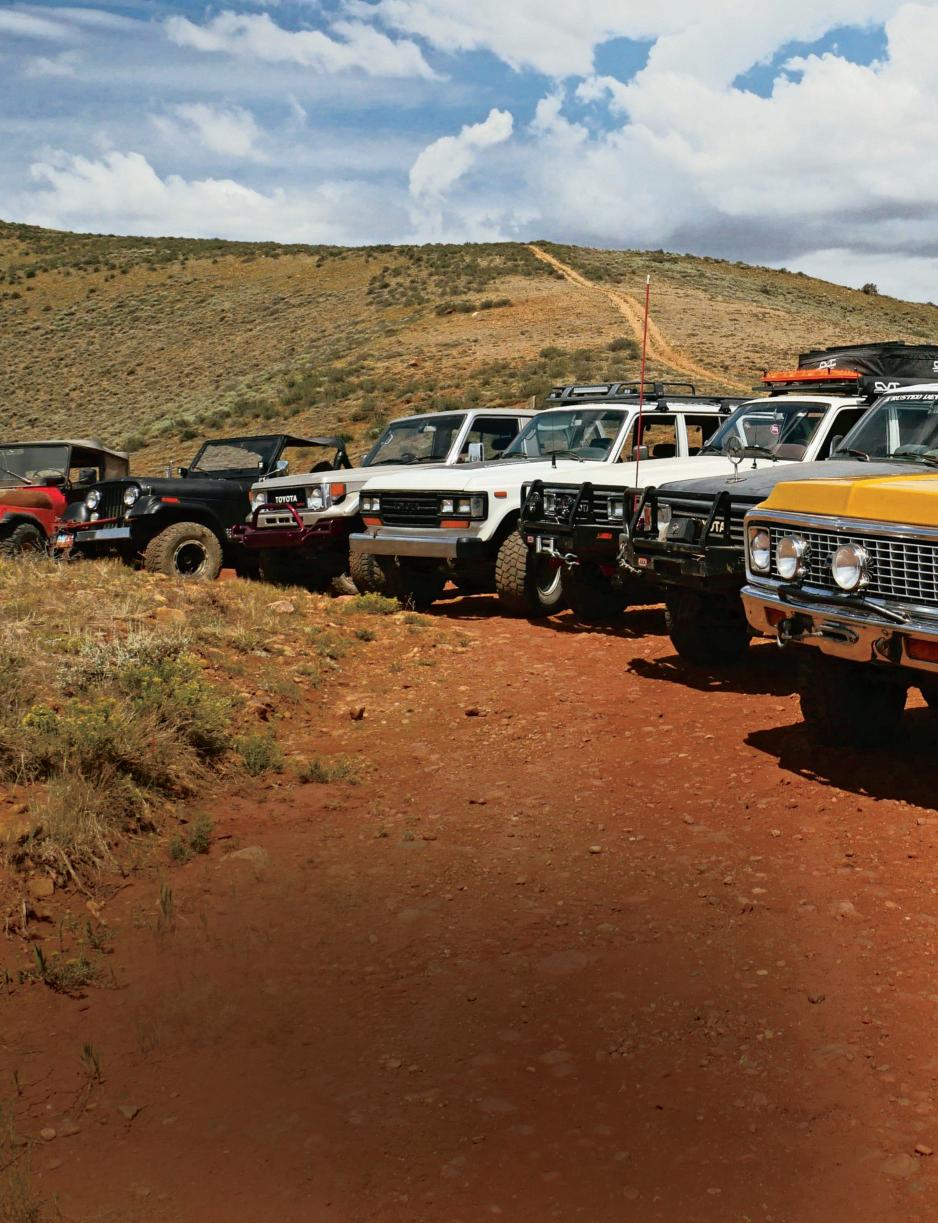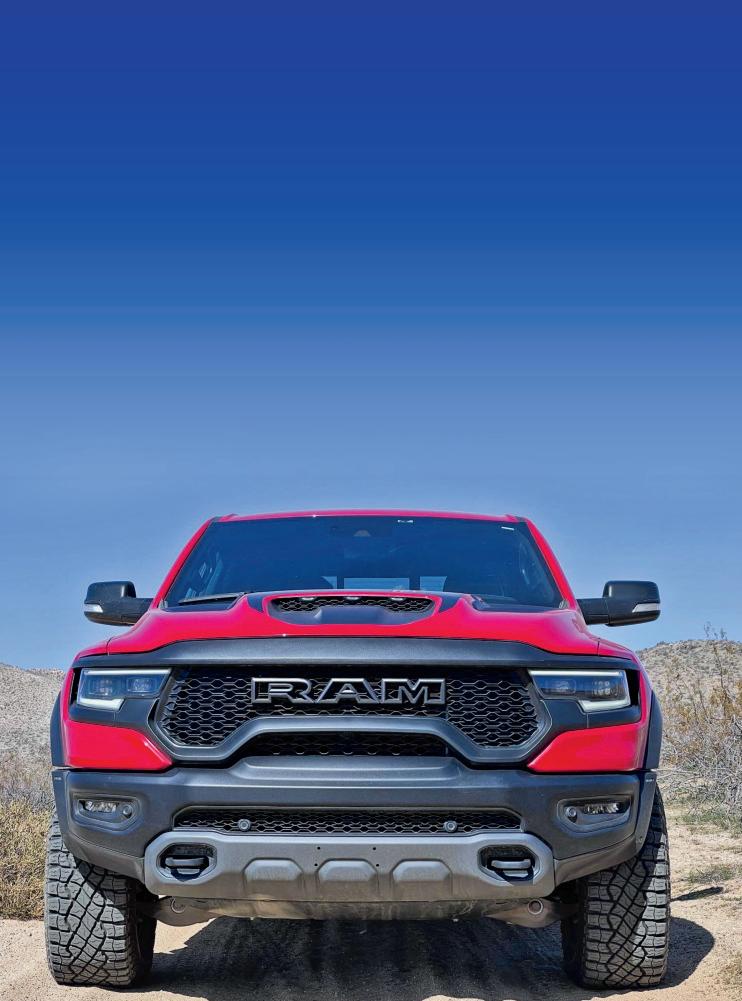
9 minute read
DIY HARDTOP RESTO
POINT YOUR PHONE CAMERA AT THIS CODE TO SEE VIDEO OF VERNE RESTORING HIS BRONCO HARDTOP
DIY HARDTOP RESTO 1 Rust—it’s a problem for any steel part, including our early Bronco top. If the top were fiberglass or composite we wouldn’t have rust, but might have cracks or other damage to repair.
Advertisement
A low-buck renewa l of ou r old, weat hered Bronco top

SOURCES
LizardSkin lizardskin.com POR-15 por15.com Summit Racing summitracing.com
By Verne Simons editor@fourwheeler.com Photos: Verne Simons
Removable hardtops are common in the off-road world and can be found on Jeep CJs and Wranglers, International Scouts, Ford Broncos, Chevy Blazers, Land Rover Defenders and Series vehicles, and Daihatsu Rockys. There are even a few aftermarket sources for Suzuki Samurais and Geo Trackers. Hardtops offer a sealed interior environment when you want it but can be relatively easily removed when you want open-air wheeling. Some tops are made from composite materials like fiberglass or plastics while others are made of steel or aluminum. The focus of this article is an early Ford Bronco hardtop that had seen better days. There was some rust in the top that needed to be patched to keep the top in service and prevent leaks and future damage from the elements.
Follow along as we spend time making this top like new and know that while some of the techniques may be slightly different, most of the ideas we use here can be applied to fiberglass or aluminum tops as well.
1 What We Started With
As you can see in the following photos, our Bronco hardtop had a bad case of steel cancer, aka rust. A few spots just showed some surface rust while others looked like Swiss cheese. The worst parts were the rear lift gate, the driprails running around the perimeter of the top, and the areas just inboard of the driprails, inside the top. These are all areas where debris had gotten trapped with moisture and rust had set in. Short of pulling the glass out of the top and popping apart the various components, we decided to attack the areas we could access to halt the rust and seal them from the elements. This meant spot-treating the surface rust, grinding it out, or cutting out pieces and welding in new patches or using POR-15 to treat areas where we couldn’t clean or cut the rust out.
2 This top is by no means perfect, but it’s a top. With a little work and some specialty products we made it nice and solid enough to last for another 10-50 years. In areas where we could get at it, we used an angle grinder with a wire wheel to grind out all the rust and then either primed the area with a self-etching primer or POR-15. The driprails were then filled with a fresh bead of seam sealer as they were from the factory. The POR-15 will bind with rust wherever we couldn’t remove it and will seal it against moisture. This was critical inside the upper edge of the top, where we could hardly fit our hand, let alone any tools to remove the rust. In these areas, we slathered on a few coats of POR-15. In some spots we had no choice but to cut out the rusted metal, re-create the part with fresh steel plate and weld it in place. When we did this, we used copper-rich weld-through primer to protect the fresh metal from new rust forming … at least that’s the idea. In other areas, where we could grind out the rust and were worried about the structural integrity, we made small plates that we painted with the copper-rich weldthrough primer and spot-welded in place.

4

3 By far, the worst areas of this top were the driprails, the interior shelf area just inside the driprails, and the rear hanging gate. We could have cut the top apart, cut out all the rust, and replaced panels that were too far gone, but instead we decided to save ourselves a ton of work and cost, and just stop the rust and seal it in.



6
6 The entire inside perimeter of this top has a shelf where rust had taken hold. Some areas were better than others, but almost all of it was rusty. We did what we could to clean out the rust in this area and then slathered on a few coats of POR-15 with a disposable brush to stop the rust from propagating.
5 This top was originally white but was “fixed up” at some point in the past with a fair amount of body filler and a fresh coat of black paint. Sadly, rust had set in on many parts of the top. But we halted it … or at least put it on pause for a while. 4 This is a top-down look at the driprail after we ground out what remained of the factory seam sealer that filled it and the rust that had taken hold underneath. Sadly, the top had a few areas like this where rust had penetrated all the way through. The right way to fix this would be to cut out all the rusted spots and patch in new metal, but if we did that with this, we’d probably be better off starting with another top. So, we did what we could with what we had. With the loose rust cleaned off, we prepped the area for POR-15 or an epoxy primer and filled the driprails (and small holes) with fresh seam sealer.

7 Here’s the quart of POR-15 we used. POR-15 comes in black, silver, gray, or clear, and it needs some surface prep (especially on clean metal or hardened paint). It’s thin and soaks into rust, requiring a few coats, and it hardens like a rock. It also needs a topcoat to prevent damage from UV light.

9
8 This is one area where we had no choice but to cut out the rusted metal and make a patch to replace it.
10

9 The front inside foot of both right and left front corners of the top had seen better days so we made these small plates to add to the top of the existing metal. Once made and drilled for spot-welds, we coated these parts in copper-rich weld-through primer. This should help prevent more rust from occurring in this area as well.

Making the Top Look Great Inside and Out
With the rust stopped and sealed, we needed to apply a topcoat to the POR-15. We used a POR-15 1K Self Etching Primer and filled any imperfections with a little body filler. POR-15 won’t stick well to smooth, previously painted surfaces without prior preparation, and it tends to find its way into all kinds of areas, so we sanded off what remained of the factory paint. We also had to use some body filler in a few small dents and around the patches that we welded in to make up for grinding marks and slight differences in surface level. We then primed everything with a few coats and prepped the painted surface for our next application. To help give the top a like-new look we sanded the paint and applied Pro Form Buck Shot Truck Bed Protective Coating 3:1 Kit from our local automotive paint supply house to the exterior of the top. This bedliner kit comes with an applicator gun and everything you’ll need, with the addition of a quart of paint to tint the bedliner. We wanted to give our Bronco a vintage look, so we tinted the top with Wimbledon White Omni MBC Acrylic basecoat per the Buck Shot instructions. We then taped off the inside of the windows and prepped the inside of the top for LizardSkin ceramic insulation we got from Summit Racing for another project. We’ve used this product on several projects and really like its insulating properties. It also does add some sound-deadening to metal tops and floorboards, in our experience. We had black LizardSkin ceramic insulation on hand but in hindsight should have used white. Once dry we coated the LizardSkin with more Wimbledon White automotive paint.

10 Here is one of the plates spot-welded in place. This should add strength and hopefully years of service to the top in an area where rust and cracks had formed in the past.
11
11 We added POR-15 to a few of the rusty spots on the outside of the top, and some from the driprail found its way through a hole to the outside. POR-15 wicks into the smallest places and will help keep rust dormant. We needed to sand it off the smooth surfaces before priming with an etching primer.
13
12 Both rear corners needed to have some very rusty spots cut out and replaced. A little body filler helped smooth the areas where we welded in the patches.
16 Here’s a close-up of the texture we achieved with the Buck Shot protective coating. We like it!

14 15


14 We sprayed the hinges in Wimbledon White and allowed them to dry before taping them off. You don’t want to coat hinges like this with the bedliner as it will restrict their movement.

16
15 We shot the Buck Shot protective coating at the higher end of the recommended air pressure to keep the texture of the spray fine. Using bedliner should help seal the top from the weather in the future and help to obscure any imperfections in the surface of the old top as well.
17

18 The LizardSkin insulation has a nice texture and when dry for 48 hours at 70 degrees can be top coated with LizardSkin topcoat or any automotive-grade paint.
18
17 Inside the top we sprayed LizardSkin ceramic insulation. We’ve used this on the interior and exterior of other vehicles and love the thermal insulation and look. We should have used the white LizardSkin insulation, but all we had was black.
19

19 We used automotive-grade urethane enamel in Wimbledon White to coat the LizardSkin. It took many coats to cover the black LizardSkin—the stuff when dry is thirsty— but the overall finish is nice and hard. FW












